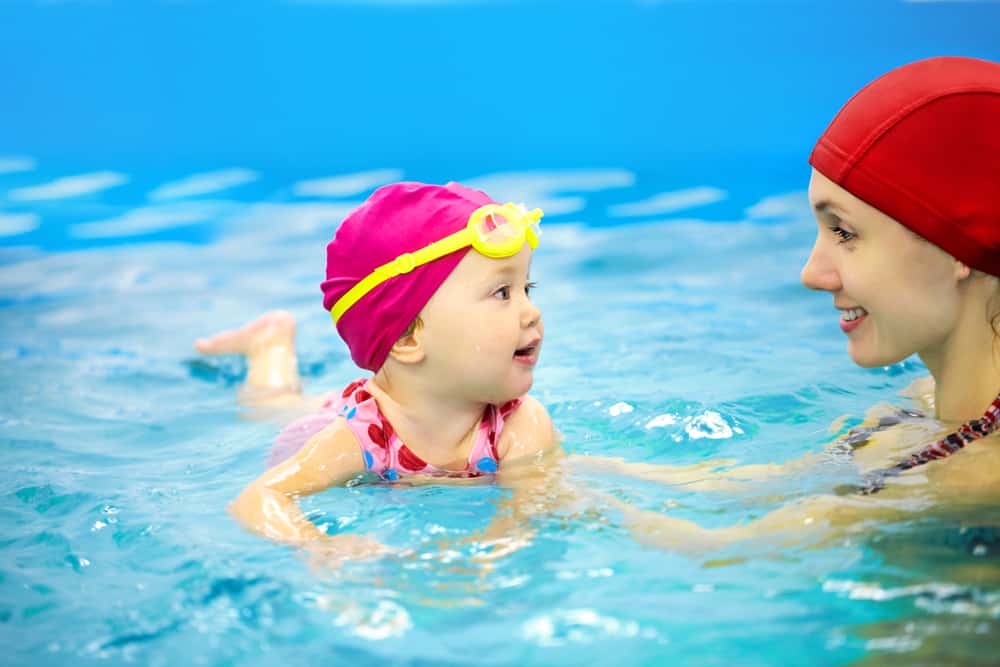For many kids, summer is all about pool or beach fun. For others, however, water-related activities are terrifying. Parents need to learn how to help their children overcome fears about water and swimming.
Working through these fears makes it possible for kids to enjoy a popular summer activity with their friends and makes it less likely they will fall victim to accidental drowning. (The CDC reports that in the United States, accidental drownings account for about 10 deaths per day, and 1 in 5 people who drown are under the age of 14.)
Respect your child’s fear
It can be tempting to dismiss or minimize your child’s fear to get him into the water more quickly. This strategy will likely backfire, and you’ll make him even more resistant to the idea of swimming. Your child’s fear is real. By acknowledging the fear and asking him to tell you more about it, you’ll quickly get to the root of your child’s anxiety.
Identify the specific source of the fear
As you listen to your child and observe her behavior around water, you’ll begin to hone in on the source of her fears. In some cases, the fear of swimming isn’t actually a fear of water.
Does your child fear swimming in pools and natural bodies of water like lakes and rivers? If she only exhibits fear around swimming pools, she may be remembering a swimming experience where her eyes were irritated by chlorine. Saltwater can also irritate the eyes, so if your child likes lakes and rivers but not the ocean, eye irritation could be to blame.
Sometimes the fear of swimming is less about the water and more about what may or may not be under the water. Children who fear monsters under the bed or in the closet may have similar fears about unknown creatures beneath the water’s surface.
Pay attention to the temperature of both the air and the water. If you’re asking your child to swim in cold water or on a cold day, his fear may be a desire to stay warm.
Does your child act more fearful at group swimming lessons? Some children thrive in a group learning environment and find the courage to overcome their fears more easily with the help of their peers. Others experience additional stress when trying to overcome fear in a group environment.
If you notice that your child’s fear is more evident in a group lesson setting, she could be experiencing some social anxiety in addition to her water-related fears.
Build trust
Thank your child for helping you understand his fears. Tell him that you will keep him safe. Please do not throw your child into the water or trick him into going in before he’s ready. You need your child to trust you if you’re going to help him conquer his fear of water.
Help your child take slow steps to overcome the fear
Once you’ve identified some specifics about the source of your child’s fear, you can begin taking steps to help your child become more comfortable around water. The following steps are geared toward children who are fearful of pools, but you can modify these steps to fit your child’s individual needs.
- Non-swimming visits: Visit the pool with your child, and let her know that she won’t have to go in the water. Don’t even bring bathing suits or towels – this should indeed be just a “reconnaissance mission.” Walk around the pool with your child and let her watch the other swimmers, but stay far enough away from the edge to make sure you both remain dry. Keep the visit short. Make a few more of these visits to the pool, until your child feels comfortable with this level of proximity to the water.
- Pool edge visits: Return to the pool and invite your child to sit beside you on the edge of the shallow end. Put your legs into the water, and tell your child that he can put his legs in, too. Tell him it’s also OK to keep his legs dry and out of the water if he prefers. Continue making this kind of visit to the pool until your child voluntarily puts his legs into the water. Remember, don’t force him.
- Bathing suit visits: Once your child is comfortable putting her legs in the water while sitting on the edge of the pool, begin visiting the pool and putting on bathing suits. Reinforce to your child that wearing a bathing suit doesn’t mean she has to get in the water. Sit on the pool’s edge and let her practice putting her legs in the water again. Tell her you’ll get in the pool for a few minutes, and then be careful not to splash your child in the process. It’s OK to tell your child how good the water feels, but don’t try to convince her to get in. Have a few water toys with you, and ask your child to throw them to you one at a time from the edge of the pool. If she enjoys this, bring them back to her and ask her to do it again.
- Invitation to enter the water: Invite your child to come into the pool with you, and tell him that you will hold him the whole time and make sure he’s safe. If he agrees, hold him firmly on your hip and take him into the water, ensuring his head stays far above the surface. If he disagrees, don’t force him. Instead, spend some more time letting him throw water toys at you from the pool’s edge.
- Bubble-blowing: Once your child is used to entering the water in your arms, you can begin teaching her to blow bubbles in the water. Begin by showing her how to blow on the water’s surface while keeping her face a few inches away. Let her try it. Then show her how to begin blowing above the surface of the water, dipping her lips into the water while still blowing to create a few bubbles, and then bring her face out of the water while still blowing. Practice this until she does it effortlessly.
- Standing alone: Put a life jacket or other approved floatation device on your child, and invite him to stand on his own in the shallow end of the pool. If he is resistant to this, return to holding him in your arms. Continue practicing the bubble-blowing exercise, encouraging your child to put more and more of his face into the water each time.
It’s likely that once your child is comfortable standing on her own in the shallow end, she’ll feel confident enough to begin to explore the water on her own. Congratulations! You’ve helped your child conquer her fear of the water.
Keep the floatation device on her for now. Once she begins venturing into deeper water, it’s essential to teach her how to stay afloat without the help of a life jacket so that she doesn’t become dependent upon floatation devices.
Your child should now be comfortable enough in the water to take swimming lessons in a group or with a private teacher. Pay attention to any issues you identified earlier (eye irritation from chlorine, tendency to feel cold, etc.), and make sure you provide tools for dealing with these (goggles to protect the eyes, thick towels for warmth, etc.)

